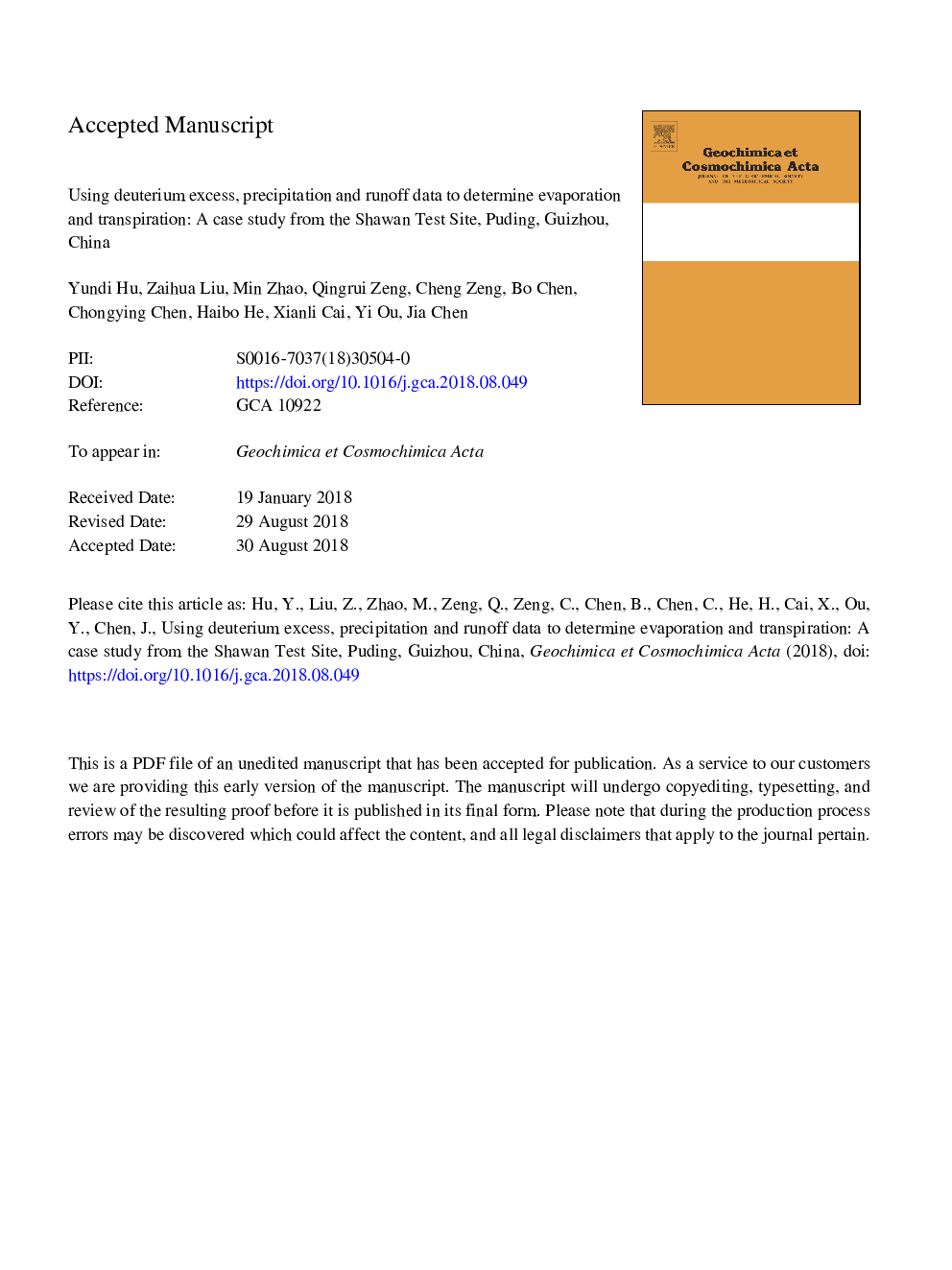| کد مقاله | کد نشریه | سال انتشار | مقاله انگلیسی | نسخه تمام متن |
|---|---|---|---|---|
| 10224344 | 1701097 | 2018 | 43 صفحه PDF | دانلود رایگان |
عنوان انگلیسی مقاله ISI
Using deuterium excess, precipitation and runoff data to determine evaporation and transpiration: A case study from the Shawan Test Site, Puding, Guizhou, China
دانلود مقاله + سفارش ترجمه
دانلود مقاله ISI انگلیسی
رایگان برای ایرانیان
کلمات کلیدی
موضوعات مرتبط
مهندسی و علوم پایه
علوم زمین و سیارات
ژئوشیمی و پترولوژی
پیش نمایش صفحه اول مقاله

چکیده انگلیسی
Separating watershed evapotranspiration into its evaporation and transpiration components is important for calculating the carbon that is assimilated by terrestrial vegetation in carbon cycle studies. The key step in this separation is to quantify the evaporation component. The deuterium excess (d-excess) in meteoric water has been shown to be an important indicator of both the original source of the water vapor and the humidity at the vapor source area. It has also shown promise for use in investigating the evaporation losses. While many studies have used the δD/δ18O method to study watershed evaporation, few have discussed the differences between the δD/δ18O (single isotope system) and d-excess (dual isotope system) methods in quantifying watershed evaporation. Given the complexity of natural watersheds, the Shawan Test Site was established at Puding, China, to study the water cycle in five concrete tanks (simulated watersheds) with different land uses over one hydrologic year. There were no plants in two of the tanks (bare rock and bare soil), which allowed verification of evaporation calculations derived from the d-excess and δD/δ18O methods. δD or δ18O values of precipitation in the rainy season, when most of the groundwater recharge occurs, showed great variability. In contrast, the d-excess of the meteoric waters collected during the same rainy season was much more stable than the δD or δ18O values. We quantified the annual evaporative loss of the five watersheds using both methods. Comparison of the results indicated that the d-excess method is more acceptable than the δD/δ18O method due to the stability of d-excess. Calculated ratios of transpiration to evapotranspiration in three tanks planted with vegetation were 56.8% in cultivated land, 70.9% in shrub land, and 85.9% in grassland, demonstrating that in well vegetated watersheds, this component of the cycle is controlled chiefly by plant transpiration. Land use has an important impact on the hydrologic cycle in a watershed, and the d-excess calculations conducted in this study provide new insights for quantifying components of the cycle, especially in the East Asian monsoon region which has rainfall with a large range in δD or δ18O values.
ناشر
Database: Elsevier - ScienceDirect (ساینس دایرکت)
Journal: Geochimica et Cosmochimica Acta - Volume 242, 1 December 2018, Pages 21-33
Journal: Geochimica et Cosmochimica Acta - Volume 242, 1 December 2018, Pages 21-33
نویسندگان
Yundi Hu, Zaihua Liu, Min Zhao, Qingrui Zeng, Cheng Zeng, Bo Chen, Chongying Chen, Haibo He, Xianli Cai, Yi Ou, Jia Chen,